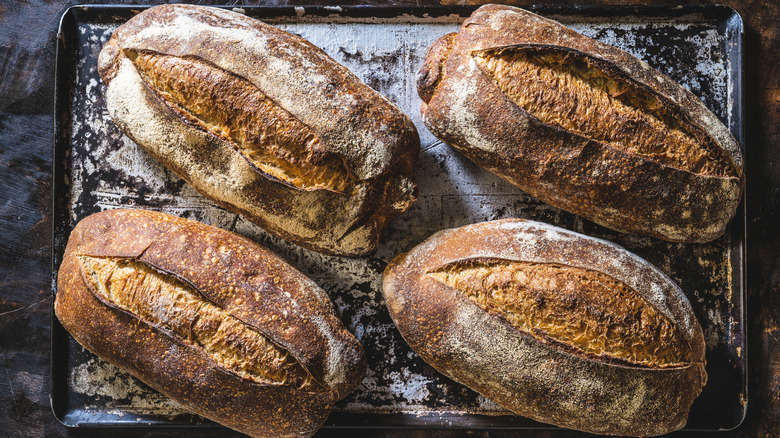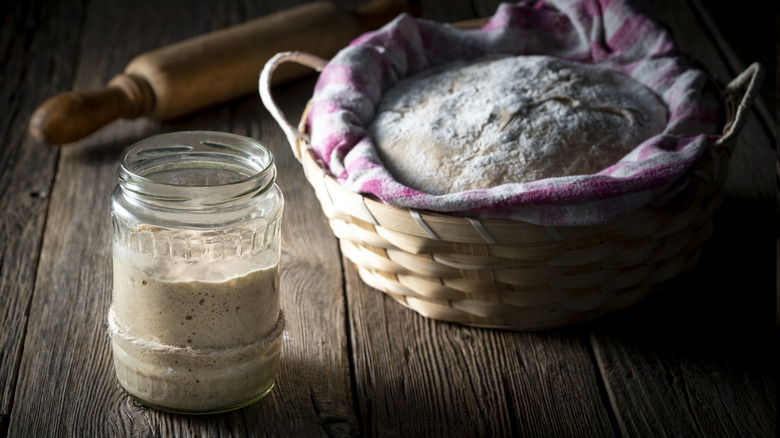The Reason Sourdough Bread May Still Work For A Gluten-Free Diet
Let's be clear, if you're following a gluten-free diet because you have celiac — an autoimmune disease that's triggered by the consumption of gluten — sourdough bread is not for you. That is unless it's clearly labeled as gluten-free. The same can be said for those with wheat allergies, which, despite common misconceptions, is not the same thing. On the other hand, if you're gluten intolerant — also referred to as gluten sensitive — you may be able to work sourdough bread into your diet since it's fermented.
Those of you who have dabbled in the art of making fresh-baked sourdough bread at home already know that all sourdough bread begins the same way: with a sourdough starter. The yeast and bacteria in that starter are then given time to feed on the sugars, carbohydrates, and proteins in the flour over time, essentially pre-digesting the gluten for you. When the time does come for your body to do some of the digesting, those same bacteria then make their way into your gut, further aiding in the digestion process. This explains why those who are gluten-sensitive might find sourdough bread significantly easier to digest, but exactly how much easier depends on how long the bread is allowed to ferment, if at all.
Fake sourdoughs and how to spot them
Some sourdoughs are made with fast-rising baker's yeast. Not only does baker's yeast lack the bacteria diversity found in a traditional starter — which directly correlates to the signature tangy flavor — but it also rises so quickly that the bacteria won't have time to do any of the predigesting that makes sourdough a gut-friendly option people with gluten sensitivities. Sourdoughs made this way are fittingly called "fakes," and to identify them, all you have to do is take a look at the ingredient list. If you see baker's yeast listed, it's not real sourdough and it's not going to do your gut any favors.
While you can opt for sourdough from a bakery instead of store-bought, you'll still want to communicate with the baker to ensure that they didn't use a baker's yeast. If they can confirm that their sourdough was made with a foolproof sourdough starter, you'll also want to ask them how long it was left to proof. The more it proofs, the more the yeast and bacteria are able to feed, and depending on your sensitivity levels, that could range anywhere from 36 to 48 hours for you to feel a difference. Knowing that, it's helpful to bake your own sourdough at home, at least at first. That way, you can experiment with different proofing times and experience how they affect the bread's digestibility. And, if you do make your own sourdough, remember our tip for scoring it perfectly every time.

